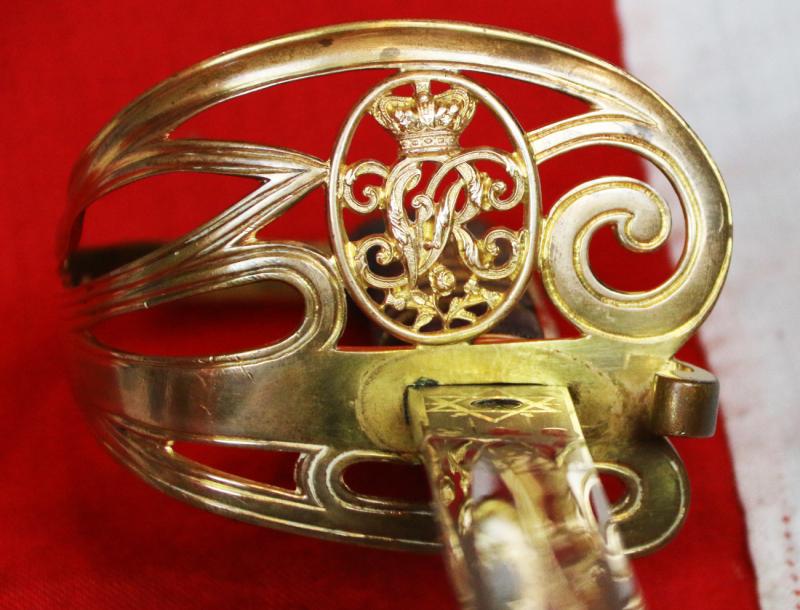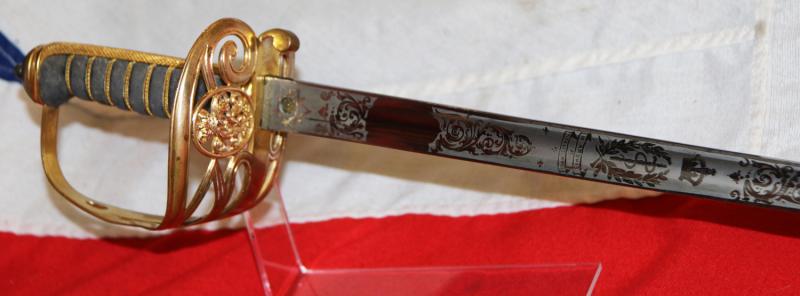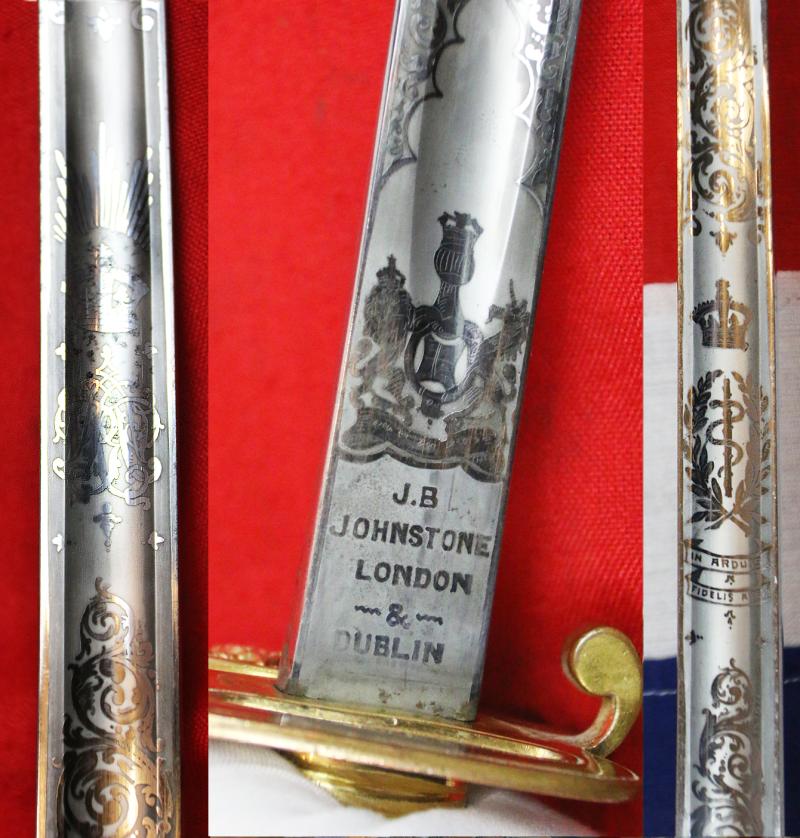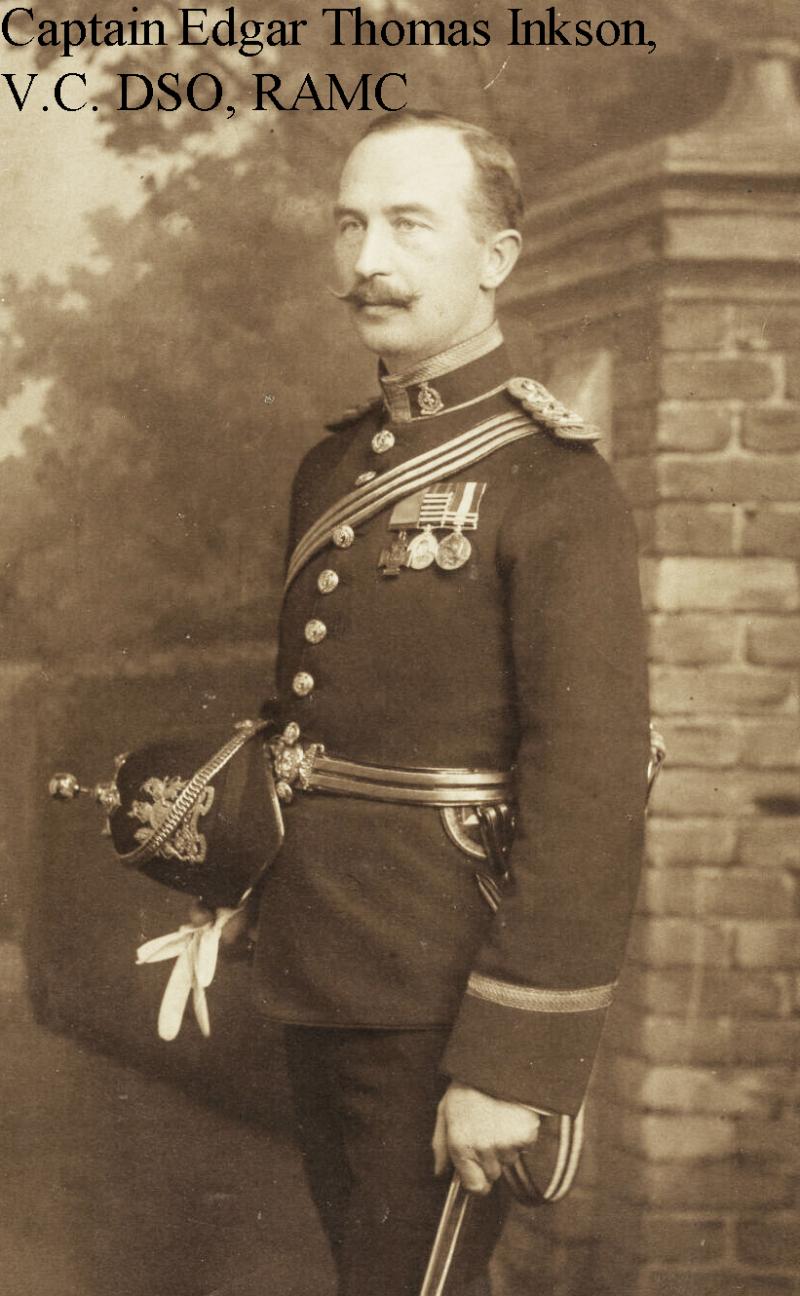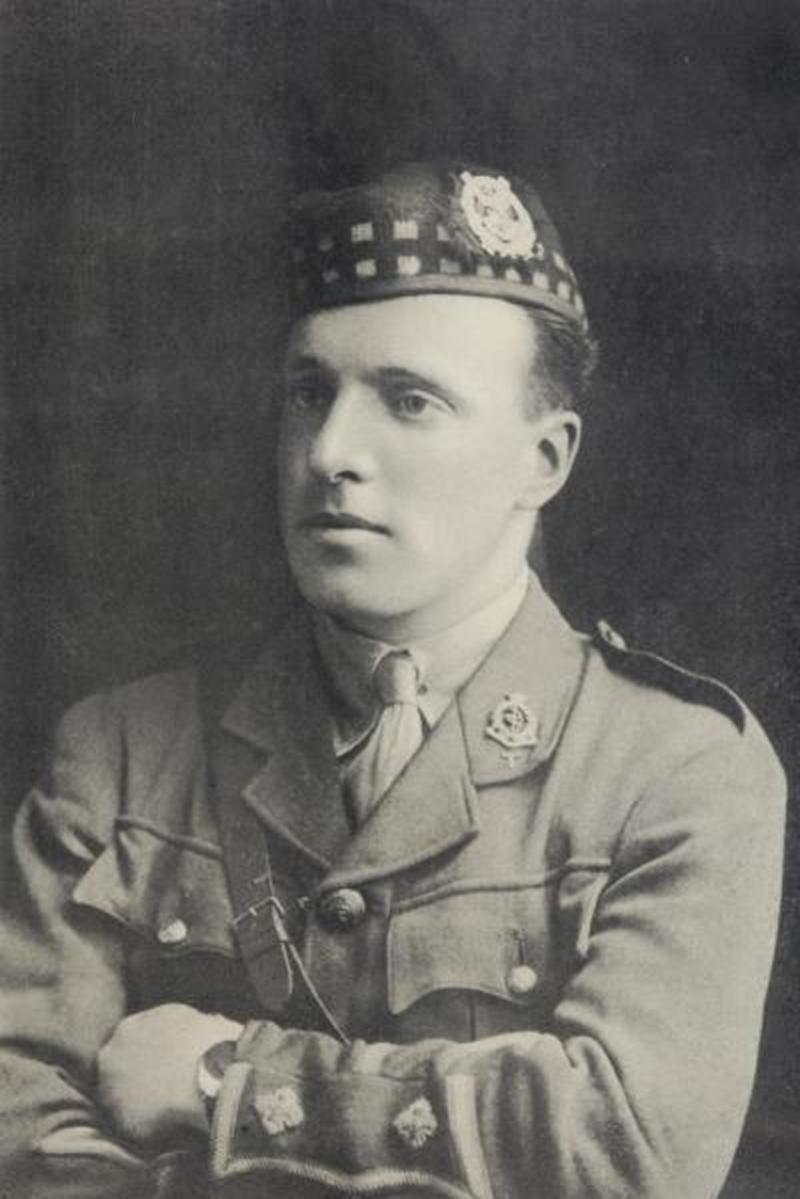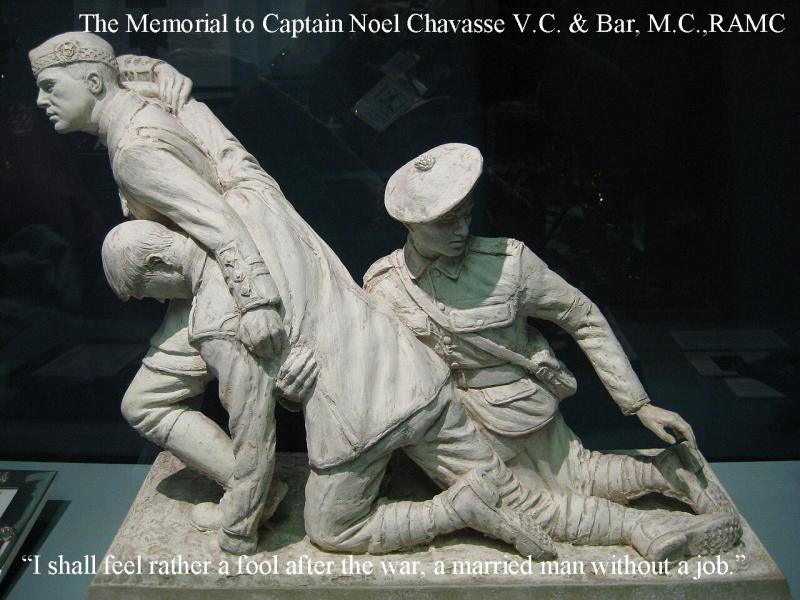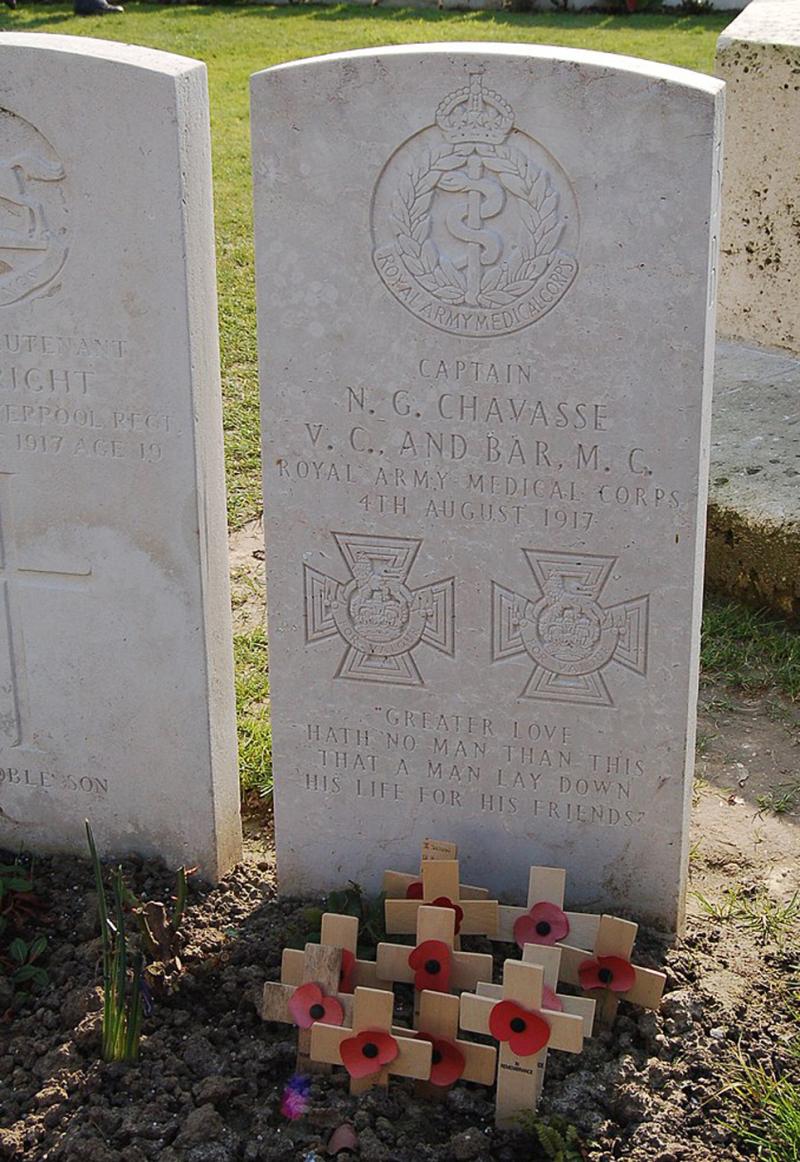A Wonderful, Victorian Surgeon’s Royal Army Medical Corps {RAMC} Officer's Sword In Pristine, Museum Grade, & Near Mint Condition. An Example So Fine It that Would Likely Be Literally Impossible to Improve Upon
Used by some of the bravest and selfless men ever to see service in the British Armed Forces. The Royal Army Medical Corps (RAMC) has been awarded a total of 29 Victoria Crosses {VC} the most highly regarded medal awarded for valour in the world. Only 1358 have been awarded since its inception in 1856, out of the tens of millions of men that have served the Empire and Commonwealth during that time.
The same pattern of sword used by British Infantry officers since 1822. This is the first pattern of sword for officers of the RAMC, with the pierced guard hilt bearing the Royal Cypher of Queen Victoria, used by its earliest serving officers. The second pattern has the similar pierced hilt but the Royal Cypher of King Edward VIIth. This sword was used in medical service with the RAMC in the Boer War, such as at Harts Hill, Colenso, and Tugela Heights, and later in WW1 on the Western Front trench warfare, such as at The Somme,Ypres and Passchendaele.
From the very earliest founding of the Royal Army Medical Corps in the Victorian era, with VR Crown pierced hilt with almost all it original gilt present. With deluxe grade near mint silvered scabbard & a near mint condition, fully etched, bright and frosted fully decorated regimental blade, with the RAMC devices of the Rod of Asclepius and the Latin motto "In Arduis Fidelis" ("Faithful in Adversity"), and with a Crown VR symbol on the opposite side.
As a most interesting point of history of the surgeons and doctors of the RAMC in the Boer War. They were supported by the Natal Volunteer Ambulance Corps. AKA 'The Body-Snatchers'. A most interesting corps that served alongside Indian volunteer bearers under the command of no less an historical figure than Mahatma Gandhi {Monhandas Karamchand Gandhi}, who was normally a barrister in South Africa at the time. And during that time the Natal Volunteer Ambulance Corps recruited from two specific and yet most contrasting groups of SA citizens, lawyers, and vagrants. Gandhi, when asked about his support of Britain in the war, was quoted as saying "I felt that, if I demanded rights as a British citizen, it was also my duty, as such, to participate in the defence of the British Empire,"
The Victoria Cross was awarded to Captain Edgar Thomas Inkson for a humane and devoted act at Hart's Hill, Colenso, February 24, 1900. Lieutenant J. G. Devenish (1st Royal Inniskilling Fusiliers), having been severely wounded and unable to move, was lying exposed to a very heavy fire. Lieutenant Inkson, seeing his danger, carried him for 400 yards through the hail of lead poured upon them, and, in spite of the absence of cover for the entire distance, succeeded in conveying him to a place of safety.
Captain Edgar Thomas Inkson, son of Surgeon-Major-General Inkson, R.A., was born at Nyne Tal, India, on April 5, 1872. After passing through University College Hospital, London, was gazetted Surgeon, July 28, 1899, just ten weeks before the war, and was almost at once sent out to South Africa. He took part in every action for the relief of Ladysmith—from Colenso to the finish, at the end of February, with Fitzroy Hart's, or the Irish Brigade, being twice named in despatches. For his services he has been awarded—in addition to the Victoria Cross—both medals and many clasps. Although daily under fire for weeks together was never once wounded, even though in medical charge with the batteries at Colenso. On return from active service, eighteen months after being gazetted, was presented with the Victoria Cross, at St. James' Palace, by H.M. The King, May 13, 1902.
He later achieved the rank of colonel after serving in the First World War.
His Victoria Cross is displayed at the Army Medical Services Museum, Mytchett, England.
The Royal Army Medical Corps (RAMC) played a vital role in caring for British soldiers during World War I. The corps expanded dramatically during the war, providing medical services in all theatres of conflict. RAMC personnel, including doctors, nurses, stretcher bearers, and ambulance drivers, were responsible for treating the sick and wounded.
The RAMC was responsible for the army's medical units and provided medical support to all other military units.
It expanded from 9,000 officers and men at the start of the war to 13,000 officers and 154,000 other ranks by the end of the war.
The corps served in various locations, including France, Belgium, Macedonia, Italy, Palestine, South Russia, and Mesopotamia.
The RAMC worked alongside voluntary organizations like the British Red Cross and St. John's Ambulance.
RAMC personnel provided a range of medical services, from basic first aid to more advanced treatments in hospitals.
They were involved in the development of new medical techniques, including the use of barges for evacuating the seriously wounded.
Preventive medicine was also a priority, with the introduction of anti-typhoid inoculation, which significantly reduced casualties from typhoid fever.
The RAMC also played a role in developing gas protection, such as gas helmets and respirators, after the introduction of chemical warfare.
The large number of casualties from modern weaponry and the global nature of the conflict presented significant challenges to the RAMC.
The RAMC faced difficulties in providing timely and effective care to all the wounded, especially those in forward areas.
Despite the challenges, the RAMC made significant contributions to the war effort, and their work is considered crucial to the well-being of the British Army.
.
Captain Noel Chavasse V.C. & Bar RAMC is one of only three people to be awarded the Victoria Cross twice – and the only VC and Bar of the First World War.
After joining the Royal Army Medical Corps in 1913 he went to France with 1/10th Battalion King’s Regiment, the Liverpool Scottish. Noel was not afraid to criticise his superiors – and got into trouble for complaining about the organisation of field ambulances, the rampant spread of venereal disease and the treatment of shell shock victims, who he believed should be helped, not shot for cowardice.
In June 1915 he won a Military Cross after 12 hours rescuing casualties at Ypres. In August 1916 he was awarded his first Victoria Cross for saving around 20 men while wounded at Guillemont on the Somme.
After two years in France with the Royal Army Medical Corps, his usually optimistic letters home had become more stark and reflective. In July 1917, he wrote to his parents about his wedding, his prospects and his VC:
“I shall get married about Christmas. Gladys wants it very badly. I shall feel rather a fool after the war, a married man without a job. Still, it’s a bit pathetic to have to leave a bronze cross to a cousin twice removed. I don't think I earned it as many men have had to do. I prize it more than I can say.”
He told how he had turned down the safety of a surgeon’s job to remain in the front line:
“I have written to the base hospital and said that though I valued the offer very much, I thought I had better stay with the lads. I felt rather depressed about it for a quarter of an hour. Always your loving Noel.”
Duty called and called me to obey.
First World War soldier Arthur Roberts
The story of Arthur Roberts
“I saw sights that I never saw before or wish to see again.”
Less than a month later, Noel was composing another letter, this time to his beloved Gladys. Mortally wounded at Casualty Clearing Station No 32 near Ypres, he dictated to a nurse: “Duty called and called me to obey.”
In the first attack of Passchendaele on 31 July 1917, Noel was hit in the head but refused to leave despite a fractured skull, venturing into no man’s land time and again to treat the wounded.
Early on 2 August, Noel’s first-aid post was hit by a shell. With his face unrecognisable and a serious stomach wound, he crawled half a mile for help. He died on 4 August aged 32.
Noel’s grave at Brandhoek New Military Cemetery is unique – the only headstone to have two Victoria Crosses on it. In 2009 his medals were bought by Lord Ashcroft for £1.5 million, the highest price paid for VCs. They are on display at the Imperial War Museum, London.
The Rod of Asclepius is a serpent-entwined staff that is the correct symbol of medicine and healing, associated with the Greek god Asclepius. It is often confused with the Caduceus, which features two snakes and wings and is associated with the god Hermes, the messenger god, and commerce. The Rod of Asclepius, with its single snake, is the more widely recognized and accepted symbol of medicine.
In Greek mythology, Asclepius was the god of healing and medicine. The Rod of Asclepius, a staff with a single snake wrapped around it, is his attribute.
The Rod of Asclepius has been a symbol of medicine and healing for centuries, representing the connection between healing and the natural world, as symbolized by the snake.
The Rod of Asclepius is the symbol used by many healthcare organizations
Captain Edgar Thomas Inkson, V.C. DSO, RAMC BOER WAR
Credit: Material re Captain Edgar Thomas Inkson, V.C., RAMC. Source: Wellcome Collection.
Code: 25822
995.00 GBP



